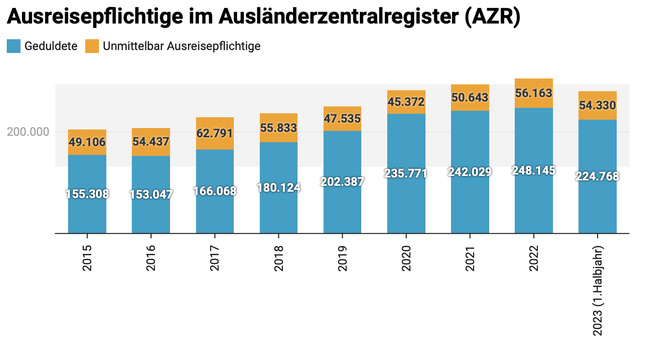Dieses “nur zwei Prozent der Emissionen”-Gerede ist, als ob Sie Ihren Nachbarn erklären, dass Sie jetzt auch gerade so gut noch ein paar weitere Jahre Ihren Müll in deren Garten kippen können, weil da doch schon so viel liegt - und davon davon ist auch schon sehr viel von Ihnen.
Seriously appreciating every single day again to be standing on shoulders of giants.
Once studied maths and computer science, now into (some) games, interested in climate, science, renewables, Covid-19 or whatever matters to me right now. It is a mess.
Social status in inverse order:
Bsky: most cf. @ini4.bsky.social
Mastodon: like it
Twitter: rarely there
Living in southern Germany. Can write English.
Die Niederlande waren fest in der Hand von WhatsApp. Man kann hier ohne WhatsApp nicht existieren, iemand een appje sturen ist absolut lebenswichtig für alles, und wenn WhatsApp down ist, dann wird das Land vorübergehend geschlossen.
Das scheint sich jetzt zu ändern.
@starrwulfe Don't get it to work here. Probably I missed a step.
@byggvir Wer es nimmt, will auch das es wirkt. Interessanter ggf. die Frage, unter welchen Umständen man es ein paar Tage absetzen kann. Wobei man ja sagt, es dauert eher um 14 Tage, bis es ganz aufhört zu wirken.
@byggvir Regelmäßig AS100 ist aber nun kein so starker Blutverdünner. Na, ja, gute Besserung!
Sorry guys, this is a test. As I just followed @bsky.brid.gy
Still alive, yet more like here lately: https://bsky.app/profile/ini4.bsky.social
Sry, too many social networks are too much for me.
Die zentrale Falschmeldung in Merz-Statement liegt nicht bei den Zähnen. Er behauptet, dass 300 000 Asylbewerber irregulär noch hier sind. Dabei ist das komplett falsch. Es sind in Wirklichkeit nur 54 000 die unmittelbar ausreisepflichtig sind. Das ist seit Jahren unverändert.
Could all the ice in Greenland melt, raising global sea levels and drowning many of our huge coastal cities?
Yes, it could, and at the rate we're going it almost certainly will someday. The problem is we don't know how close we might be coming to a catastrophic tipping point.
Here's more from Planet Snapshots...
__________________________
Rewind about 400,000 years ago and Greenland was, in fact, green. Temperatures were warmer then, and global sea level was at least 5 feet (1.5 m) higher than today.
Greenland is one of Earth’s most pressing climate tipping points — thresholds in the planet’s fine-tuned, self-regulating system that, once breached, cause dramatic and damaging changes. Its life support systems work like a game of Jenga: removing a few blocks may compromise the structure’s stability without ending the game. But there’s a critical block that will bring it crashing to the ground. Hiding within Jenga-Earth are critical blocks that, when pulled, will tip the whole structure.
Global sea level would rise 23 feet (7 m) if Greenland’s ice sheet completely melted again. The goal is to keep that “if” from turning into a “when.”
Scientists don’t know exactly how much atmospheric warming would trigger that level of melt, but some estimate a figure as low as 1.6°C. We’re well on track to surpass that target, especially considering that the loss of Greenland’s ice is creating a positive feedback loop.
The same reflectivity that makes it difficult for satellites to image the ice sheet is also great at bouncing back sunlight. But more of the ice is melting and the surface is darkening, reducing its reflectivity, or albedo, and further accelerating ice loss.
__________________________
FULL ARTICLE -- https://medium.com/@planetsnapshots/issue-89-tipping-points-greenland-5bdda753bea8
#Science #Environment #Climate #ClimateChange #ClimateCrisis #ClimateEmergency
@KarlE Die Groko haben wir ja jetzt zum Glück hinter uns, was die Ampel in 2 Jahren an Gesetzen geschafft hat, ist ja schon mehr als 8 Jahre zuvor.
Der #MannheimerMorgen
fragt sich, was wir bei #Wasserknappheit tun wollen.
Sollte der Wasserverbrauch Ihrer Meinung nach für alle Haushalte gedeckelt werden?
#CiveyFrage via @civey_de https://civey.com/umfragen/24228/sollte-der-wasserverbrauch-ihrer-meinung-nach-fur-alle-haushalte-gedeckelt-werden
German Angst, jetzt wo die Welt keine Schummeldiesel mehr will?
(Aktuell läuft noch)
Bereit es Ihnen Sorge, dass der Internationale Währungsfonds einen Rückgang der deutschen Wirtschaftsleistung um 0,3 Prozent vorhergesagt hat?
#CiveyFrage via @civey_de https://civey.com/umfragen/32732/bereit-es-ihnen-sorge-dass-der-internationale-wahrungsfonds-einen-ruckgang-der-deutschen-wirtschaftsleistung-um-0-3-prozent-vorhergesagt-hat
Das ist ja scheinbar einfach?
(Frisch, läuft noch)
Sollte der ehemalige Bundesverkehrsminister Andreas Scheuer (CSU) Ihrer Meinung nach persönlich für die durch die geplatzte PKW-Maut entstandenen finanziellen Schäden haften?
#CiveyFrage via @civey_de https://civey.com/umfragen/32734/sollte-der-ehemalige-bundesverkehrsminister-andreas-scheuer-csu-ihrer-meinung-nach-personlich-fur-die-durch-die-geplatzte-pkw-maut-entstandenen-finanziellen-schaden-haften
I saw someone refer to cryptocurrency as “Dunning-Krugerrands” and from now on that’s what I’m going to call it.
@KarlE Das traurige ist ja, dass die Ampel, trotz des Streits noch viel mehr Gesetze fertig bekommt, als es unter Merkel passiert wäre. Kann man sich leicht im Bundesgesetzblatt (https://www.recht.bund.de/de/home/home_node.html) drüber informieren.
D.h. der schlechte Eindruck trügt.
Und, ja, dass die CDUCSU zunehmend eine Brandmauer zwischen sich und der intelligenten Bevölkerung aufbaut, ist tragisch.
Wieder so eine Frage, wo man nicht weiß, ob die Antwort die Leser des Focus Online beschreibt, oder die Bevölkerung?
Sollte die Bundesregierung Ihrer Meinung nach strengere Klimaschutzmaßnahmen beschließen, um die deutschen Klimaziele für 2030 zu erreichen?
#CiveyFrage https://civey.com/umfragen/32276/sollte-die-bundesregierung-ihrer-meinung-nach-strengere-klimaschutzmassnahmen-beschliessen-um-die-deutschen-klimaziele-fur-2030-zu-erreichen
Schon wieder Mannheimer Morgen, haben wir noch die Spendierhosen an für die Ukraine?
Sollte sich Deutschland Ihrer Meinung nach dafür einsetzen, dass die Europäische Union die Ukraine mit weiteren 50 Milliarden Euro unterstützt?
#CiveyFrage https://civey.com/umfragen/32265/sollte-sich-deutschland-ihrer-meinung-nach-dafur-einsetzen-dass-die-europaische-union-die-ukraine-mit-weiteren-50-milliarden-euro-unterstutzt
Spannende Frage, Mannheimer Morgen. Alleine, ich glaube die Einschätzung nicht.
Hat Ihrer Meinung nach eher die Politik der Bundesregierung oder eher der restlichen Opposition im Bundestag zu den hohen Umfragewerten der AfD geführt?
#CiveyFrage https://civey.com/umfragen/32267/hat-ihrer-meinung-nach-eher-die-politik-der-bundesregierung-oder-eher-der-restlichen-opposition-im-bundestag-zu-den-hohen-umfragewerten-der-afd-gefuhrt
Diese Abstimmung läuft noch, ich war vom Stand überrascht, den ich vorfand:
Wie bewerten Sie den aktuellen politischen Kurs von CDU-Chef Friedrich Merz?
#CiveyFrage https://civey.com/umfragen/32433/wie-bewerten-sie-den-aktuellen-politischen-kurs-von-cdu-chef-friedrich-merz


